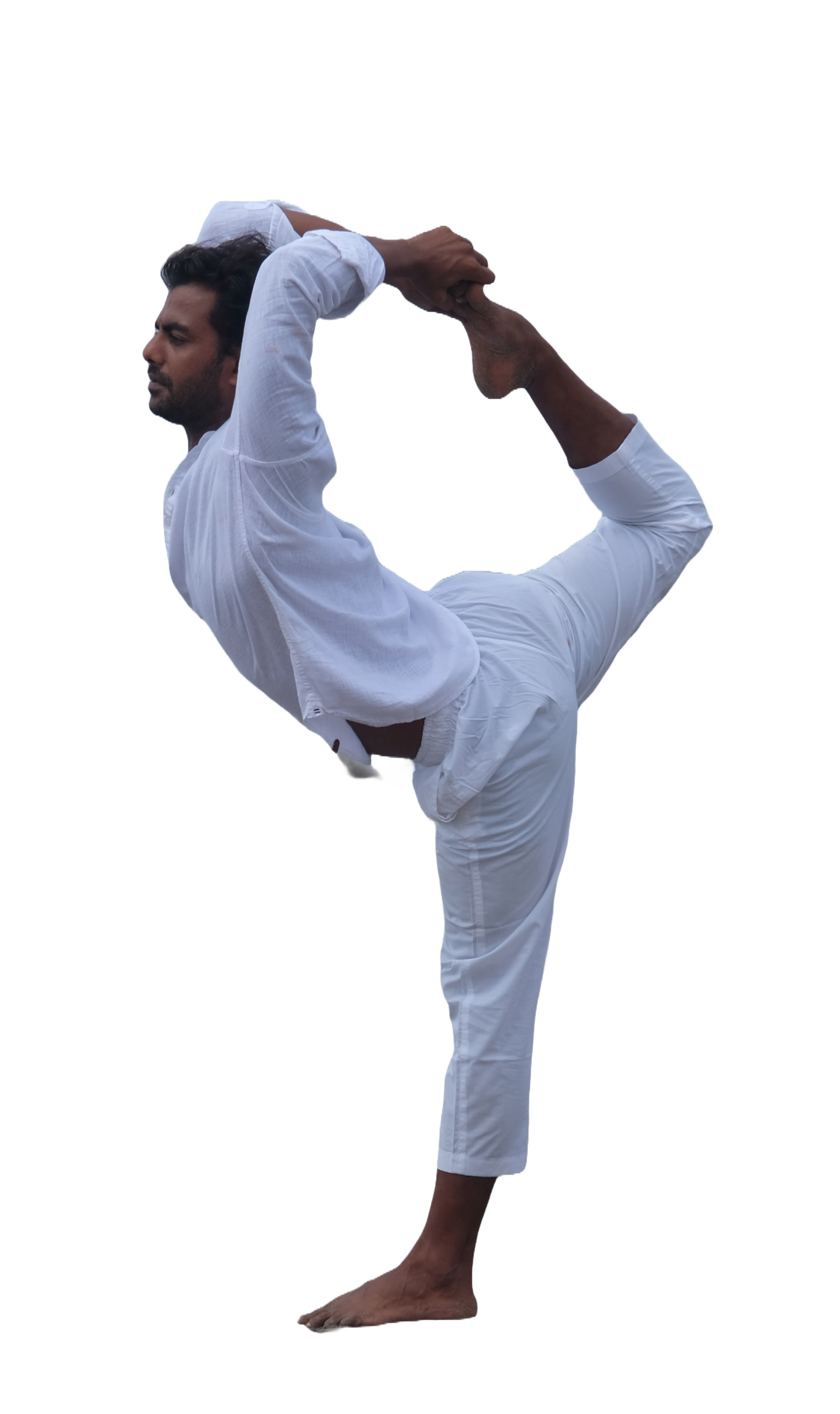
How to do Swan Pose
Hamsasana
Sanskrit: हंसासन
Hamsasana, or Swan Pose, derives its name from the Sanskrit words “Hamsa,” meaning swan, and “asana,” meaning pose. The swan is a symbol of grace, beauty, and elegance in many cultures. In Hindu mythology, the swan is often associated with Saraswati, the goddess of wisdom, music, and art.
Hamsasana is a powerful arm-balancing pose. Practicing this pose is believed to cultivate a sense of inner grace and poise, while building physical strength and balance.
Steps to Perform Hamsasana (Swan Pose)
- Start in a Kneeling Position:
– Begin by kneeling on the floor with your knees apart and your hands placed on the floor in front of you, fingers pointing forward.
- Position Your Elbows:
– Bend your elbows and place them on either side of your navel, pressing them into your abdomen. Your forearms should be parallel to each other.
- Lean Forward:
– Lean your torso forward, shifting your weight onto your hands and elbows. Your chest should come close to the floor, and your head should be lifted slightly.
- Extend Your Legs:
– Gradually extend your legs straight back, keeping your feet on the ground. Your body should form a straight line from your head to your heels.
- Engage Your Core:
– Engage your core muscles to maintain balance and stability. Keep your gaze slightly forward to help with balance.
- Hold the Pose:
– Hold the pose for a few breaths, maintaining steady and even breathing. Focus on keeping your body straight and your elbows pressing into your abdomen.
- Release the Pose:
– To release, slowly lower return to the kneeling position.
Benefits of Hamsasana (Swan Pose)
- Strengthens Arms and Wrists:
– Hamsasana helps build muscular endurance and strength in the arms, wrists, and shoulders.
- Tones Abdominal Muscles:
– The pose engages the core muscles, helping to tone and strengthen the abdominal region.
- Improves Digestion:
– The pressure of the elbows against the abdomen stimulates the digestive organs, improving digestion and alleviating digestive issues.
- Enhances Balance and Coordination:
– Balancing the body horizontally on the hands enhances coordination, focus, and overall balance.
Contraindications for Hamsasana (Swan Pose)
- Wrist Injuries:
– Individuals with wrist pain or injuries should avoid this pose, as it puts significant pressure on the wrists.
- Elbow or Shoulder Issues:
– Those with elbow or shoulder problems should practice caution or avoid Hamsasana to prevent exacerbating the condition.
- Abdominal Conditions:
– Avoid this pose if you have abdominal injuries, ulcers, hernias, or recent abdominal surgery.
- High Blood Pressure:
– Individuals with high blood pressure should avoid this pose due to the intense pressure it places on the abdominal region.
- Pregnancy:
– Pregnant women should avoid this pose as it involves intense abdominal pressure.
Tips for Beginners
- Use Props for Support:
– Beginners can place a cushion or bolster under the hips for additional support while attempting the pose.
– Place a bolster or block below your chest or head for support.
2.Strengthen Core Muscles:
– Work on core-strengthening exercises to build the necessary strength for maintaining balance in this pose.
3. Start with Bent Knees:
– Begin with bent knees and gradually extend the legs as you build strength and confidence in the pose.
Swan pose is a great preparatory posture and alternative for Mayurasana.
Learn Other Poses:
- How to do Shikrasana?
- How to do Peacock Pose?
- How to do Kukkutasana?
- How to do Krounchasana?
- How to do Kokilakasana?
- How to do Kapotasana?
- How to do Kapinjalasana?
- How to do Kakrakasana?
- How to do Eagle Pose?
- How to do Crow Pose?
- How to do Bakasana?
Popular Courses in Bali
200 hour Yoga Teacher Training in Bali | 300 hour Yoga Teacher Training in Bali | 500 hour Yoga Teacher Training in Bali | 50 Hours Yin Yoga Training in Bali | 50 hours Pranayama Training in Bali | 50 hours Yoga Nidra Training Bali | 50 hours Arm Balancing Training Bali | 100 hour Ashtanga Training Bali
Popular Courses in Germany
200 hour Yoga Teacher Training in Germany | 300 hour Yoga Teacher Training Germany | 50 Hour Yin Yoga Training Germany | 50 Hour Pranayama Training Germany | 50 hour Yoga Nidra Training Germany | 50 Hour Arm Balancing Training | 100 hour Ashtanga Training Germany

